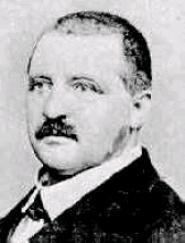Recorded 1953 (1953) | Catalogue WAB 102 Movements 4 | |
 | ||
Composed 1871 (1871)–1872 (1872):1875 (1875)–1876 (1876):1890 (1890) | ||
Anton Bruckner's Symphony No. 2 in C minor was completed in 1872, and revised, like most of Bruckner's other symphonies, at various points thereafter. This work is sometimes known as the "Symphony of Pauses".
Contents
- Description
- 1872 version
- 1873 version
- 1876 version
- 1877 version
- 1892 version
- Selected discography
- Haas edition
- Nowak edition
- Carragan edition
- References
It was composed after the Symphony "No. 0" in D minor (which was itself composed after the Symphony No. 1 in C minor). It is the only "official" Bruckner symphony (that is to say, excluding "No. 0") without a dedication: Franz Liszt tacitly rejected the dedication, and Richard Wagner chose the Symphony No. 3 in D minor instead. The premiere was given with Bruckner himself conducting in 1873.
Description
The score calls for a pair each of flutes, oboes, clarinets, bassoons, four horns, two trumpets, three trombones, timpani, and strings.
The symphony has four movements:
- Moderato, C minor
- Scherzo: Mäßig schnell (Moderately fast), C minor — Trio: Gleiches Tempo (Same tempo), C major (Put in 3rd position in the later versions).
- Feierlich, etwas bewegt (Solemnly, somewhat animated), A-flat major
- Finale: Ziemlich schnell (Fairly fast), C minor
1872 version
This version has been published in an edition by William Carragan (published 2005). In this version, the Scherzo and slow movement are swapped, the scherzo preceding. It has been recorded by Kurt Eichhorn, Georg Tintner, Simone Young, and Herbert Blomstedt. "Bruckner's mania for revision sometimes bore positive fruits … , but with other works such as the Second and the Third his first versions seem to me the best."
1873 version
This version, which was used at the premiere, replaces the horn in a solo at the end of the Adagio, considered unplayable by the hornplayer, by a clarinet and the viola section, deletes repeats in the scherzo and replaces a "very dissonant section of the development" in the Finale. This version has been recorded by Kurt Eichhorn.
1876 version
Certain details of this version, together with details of the 1873 version, appear in the Carragan edition of the symphony. It has also been recorded by Kurt Eichhorn.
1877 version
The editions by Robert Haas (published 1938) and Leopold Nowak (published 1965) are both based on this version.
Haas' edition contains some features of the previous version, which, as in the 1890 version of the 8th symphony, were crossed out by Bruckner in the 1877 manuscript. The edition by William Carragan (published 1997) is a corrected Nowak edition. Most recordings of the symphony are made of the Haas and Nowak versions. The Carragan edition has been recorded by Daniel Barenboim.
1892 version
This version was edited by Cyrill Hynais. Until recently it was thought to be inauthentic, but Carragan has shown that it corresponds closely to the 1877 version. A cut version of the scherzo of this version was used in the first recording of this symphony, by Fritz Zaun in 1934. There is a single full recording of this version, which has been performed by Hermann Scherchen with the Toronto Symphony Orchestra in 1965.
Selected discography
The first commercial recording of part of the symphony was made by Fritz Zaun with the Berlin State Opera Orchestra in 1934. It contained only a cut version of the scherzo, in the 1892 first published edition.
The oldest surviving complete performance is by Georg-Ludwig Jochum with the Bruckner Orchestra of Linz. It dates from 1944 and uses the Haas edition.
The first commercial recording was by Volkmar Andreae with the Vienna Symphony Orchestra in 1953, also using the Haas edition. The first recording on Hybrid SACD was by Simone Young conducting the Hamburg Philharmonic.
